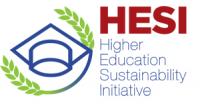The Gap Frame: a new global framework for a better world
Description
A first data version of the Gap Frame using a selection of 14 countries has been developed to generate a world data point and a first indication of the state of the world. These countries were selected to reflect the breadth and diversity of the world. The 14 countries were selected from the Social Progress Index and include countries from the most to the least advanced social progress nations. There are 69 indicators for some 24 issues identified under four categories: social, environmental, economic and governance. Once the beta version has been completed and is benchmarked and tested against expert input, the Gap Frame will extend to include increasingly more countries.
The Gap Frame is intended to provide an index that can be a lead indicator of how countries may be set up to perform in future. Countries and business organizations that operate among and beyond these countries can engage in applying their innovation power to solve these 24 burning issues.As such, the Gap Frame empowers nations and business to work together to attain a normative, desired future state.
This research project with a highly applied dimension has been initiated by Business School Lausanne in partnership with the University of St. Gallen. A consultative body of experts are contributing to the development of the Gap Frame research.
Feedback
Action Network


Timeline
Entity
SDGs
Geographical coverage
More information
Countries
Contact Information
Katrin Muff, Dean
